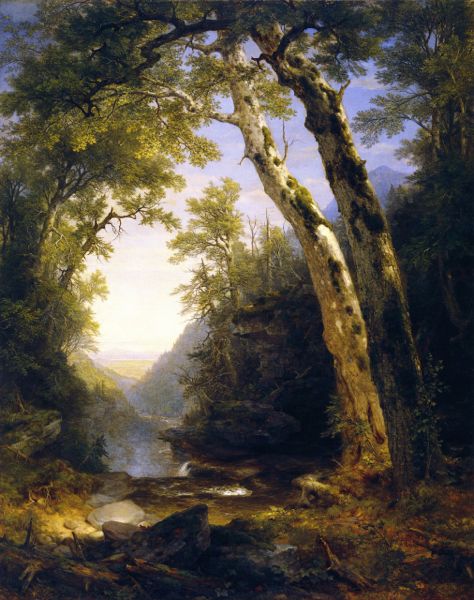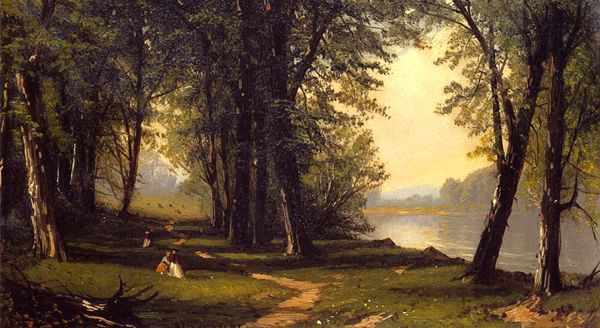The Hudson River School was America’s first true artistic fraternity. Its name was coined to identify a group of New York City-based landscape painters that emerged about 1850 under the influence of the English émigré Thomas Cole(1801–1848) and flourished until about the time of the Centennial. Because of the inspiration exerted by his work, Cole is usually regarded as the “father” or “founder” of the school, though he himself played no special organizational or fostering role except that he was the teacher of Frederic Edwin Church (1826–1900). Along with Albert Bierstadt (1830–1902), Church was the most successful painter of the school until its decline. After Cole’s death in 1848, his older contemporary Asher B. Durand (1796–1886) became the acknowledged leader of the New York landscape painters; in 1845, he rose to the presidency of the National Academy of Design, the reigning art institution of the period, and, in 1855–56, published a series of “Letters on Landscape Painting” which codified the standard of idealized naturalism that marked the school’s production. The New York landscape painters were not only stylistically but socially coherent. Most belonged to the National Academy, were members of the same clubs, especially the Century, and, by 1858, many of them even worked at the same address, the Studio Building on West Tenth Street, the first purpose-built artist workspace in the city. Eventually, several of the artists built homes on the Hudson River. Though the earliest references to the term “Hudson River School” in the 1870s were disparagingly aimed, the label has never been supplanted and fairly characterizes the artistic body, its New York headquarters, its landscape subject matter, and often literally its subject.
Duran did other lovely Sycamores:
Thomas Cole, founder of the Hudson River School, said this:
‘Yet I cannot but express my sorrow that the beauty of such landscapes are quickly passing away–the ravages of the axe are daily increasing–the most noble scenes are made desolate, and oftentimes with a wantonness and barbarism scarcely credible in a civilized nation. The wayside is becoming shadeless, and another generation will behold spots, now rife with beauty, desecrated by what is called improvement; which, as yet, generally destroys Nature’s beauty without substituting that of Art.’





Pingback: tienda en madrid de camisetas frikis
Pingback: nike air max command
Pingback: maillot karim benzema real madrid
Pingback: camisetas del real madrid wikipedia
Pingback: fernando torres in chelsea shirt
Pingback: ausw?rtstrikot arsenal london
Pingback: comprar camisetas frikis en madrid
Pingback: Men's Nike San Francisco 49ers 53 NaVorro Bowman Elite Black Camo Fashion Super Bowl XLVII NFL Jersey
Pingback: camiseta real madrid 2013 escudo
Pingback: roshe sneakers by nike
Pingback: new england home shirt nike
Pingback: sneaker news roshe run id
Pingback: green bay packers historical jerseyss
Pingback: nike roshe mens sale
Pingback: roshe run mens red
Pingback: buy old liverpool fc shirts
Pingback: camisa verde de treino do brasil
Pingback: ladies arsenal away shirt
Pingback: camiseta alemania 2014 bogota
Pingback: deutschland trikot von ?zil
Pingback: maillot mexique pas cher
Pingback: WolfeNotes.com » Pinelands Commissioner Lohbauer Eviscerates Murphy DEP Logging Plan